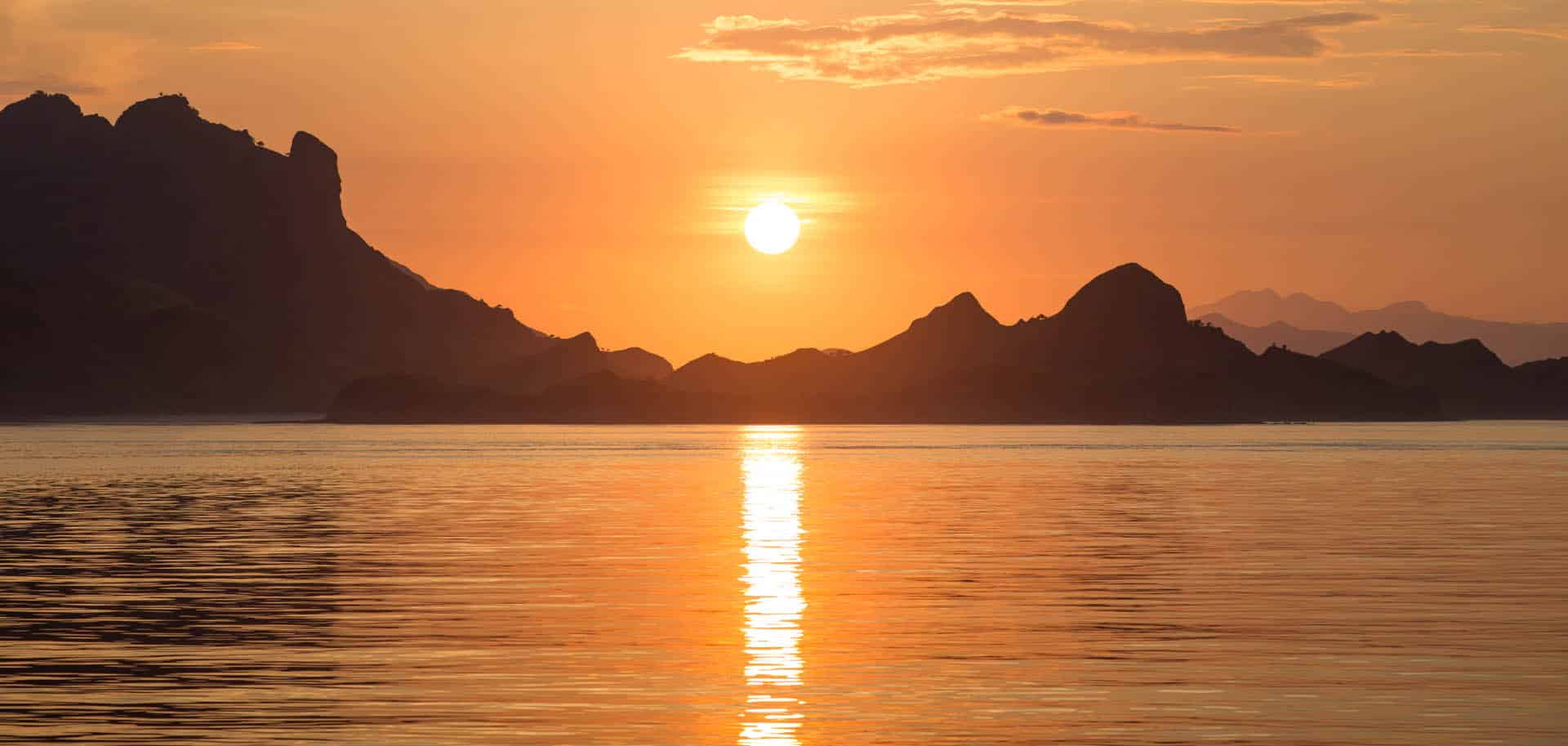
If you asked a child to draw a volcano at sunset this would be what it would look like.
Everything was almost too fairytale picture-perfect to be true. The volcano rose directly from the sea in a perfect cone, a white cloud draped like a cashmere shawl across its shoulder. An old Spanish sailor once told me that a mountain like this is often described as vestido de novia – in bridal dress. Sangeang volcano was taking the analogy to extremes: a little feather cap of smoke – like a volcanic fascinator – was sullied to silver by just a hint of ash.
The light was changing dramatically as the sun sank behind the endless chain of similarly perfect volcanic peaks that marks Indonesia’s Ring of Fire landscape. On the rocky ledge in front of me, English photographer Ben Stockley was frantically adjusting his tripod, aware that with every fleeting second he was shooting what could appear to be a completely different landscape. Within a moment the volcano’s shawl was burnished to amber and the tiara was filigreed in gold.

Down in the bay below us an elegant timber tall-ship lay at anchor, looking at this distance like a toy on a blue-glass tabletop. I knew that somewhere among the craggy hills of Komodo, just across the bay – the perfect addition to what might have been just a child-like adventure fantasy – there were entire hordes of real-life dragons.
It was dark by the time we’d scrambled down the rocky slope to the beach where our RIB (rigid inflatable boat) waited. The moon was yet to rise and our engine churned up a glimmering wake-stream of phosphorescence, mimicking the dome of stars that arced over us. In a few minutes Dunia Baru’s 30m mainmast loomed up against the Southern Cross and our bare toes had barely touched the cool teak deck before a frosted champagne flute was soothing our rock-scoured fingertips.
With her rearing bow and elegantly curved waist, Dunia Baru (which means New World in Indonesia) is a fine example of the legendary phinisi tall-ships that were once sailed by the Bugis people of Sulawesi. The fearsome pirates who leant their name to the infamous Boogie Man of childhood nightmares sailed with the monsoon winds for many months at a time, plundering coastal villages. Times are more peaceful now and a small and exclusive fleet of these wonderfully graceful schooners is charting an ever more adventurous course, effectively shining a light into some of the remotest and most mysterious corners of the world’s biggest island nation.
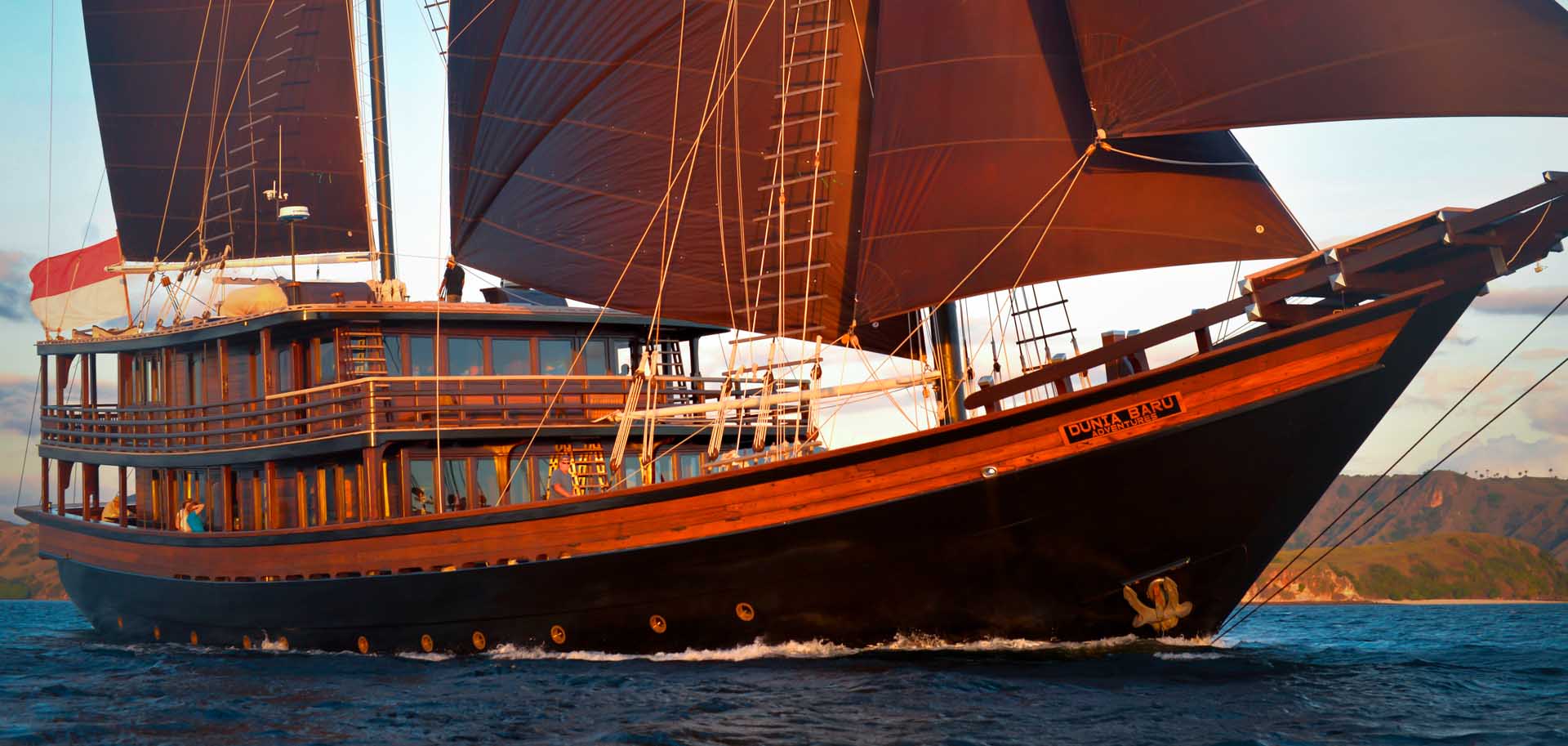
“A luxury phinisi like Dunia Baru is the only way to visit Indonesia’s most remote and beautiful spots in 5-star comfort,” Mark Robba, Dunia Baru’s American-born owner, told me as we walked aft to the al fresco dining table that dominates the yacht’s 11m beam. “This is world-class adventure – true exploration...but at a level of luxury that would be impossible by any other means.”
Robba – a man whose love for this country provoked him to trade in his US passport for an Indonesian one – originally built the superyacht for his family to be able to explore the wonder and beauty of the Indonesia Archipelago on holidays. The story of the boat’s construction up a jungle river near the coast of Borneo sounds like one of the wilder adventure tales of Joseph Conrad. I tried to focus on details as my concentration wavered between chef Tom Brett’s succulent beef short ribs, the excellent Château Haut-Bailly Pessac-Léognan Bordeaux and the star-shimmering equatorial night.
Robba flew an elite workforce of Konjo shipwrights (so talented that the Bugis traditionally commissioned them to build their vessels) from their home in Ara, Sulawesi, to establish a base camp in Borneo, where sufficient quantities of ironwood and bangkirai wood were still available. The boat was expected to take 2.5 years to build but Robba’s refusal to accept anything short of excellence meant that the entire project took eight. Somewhere along the tale of his thirtieth journey from his home in Java to the Borneo workcamp (involving a flight, a 10-hour road-trip and a 2-hour speed-boat journey) dessert arrived in the form of a moist chocolate mousse with dried strawberries.
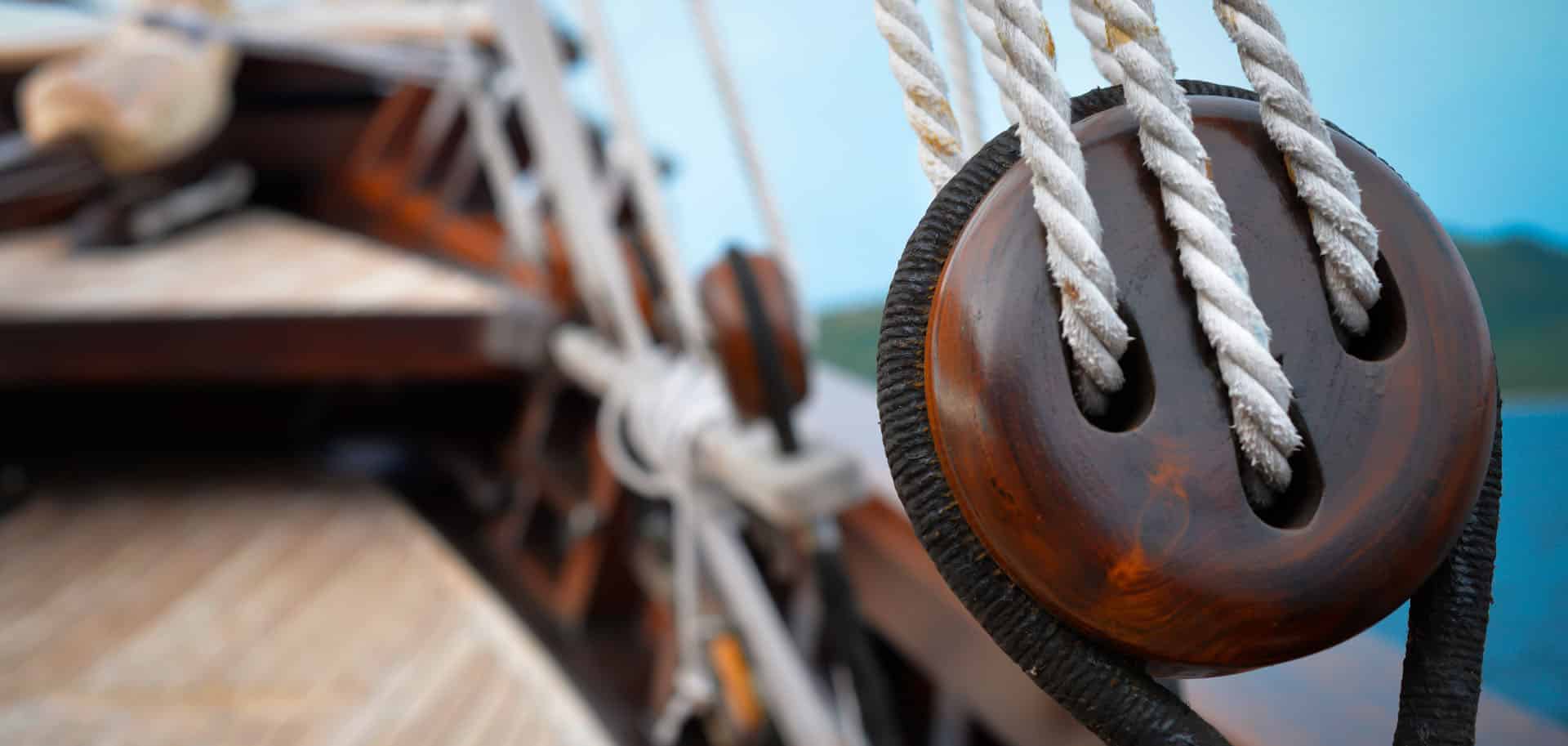
When the superstructure had finally been fitted out by some of the best carpenters in Bali there was one more procedure to complete before Dunia Baru was free to set sail to new horizons.
I’d been to Sulawesi in the past, researching a story on the local ship-building culture: “A phinisi is much more than just the materials that go into her,” master-shipwright Pak Haji Wahab told me. “If you’re going to bring the boat to life you must observe the traditional ceremonies: when you first lay the keel you have the an’natta ceremony where you drill a ‘navel’ right through the centre of the keel. We used to seal this afterwards by hammering in a mangrove stem but now we use hardwood pegs. When the boat is completed there’s another ceremony when the deck must be cleansed with the blood of a goat.”
True to this tradition, Dunia Baru sailed back to Sulawesi where Robba had to wince in respectful silence while his carefully tended teak decks were lavishly splattered with goat blood.
Who’s to say that the rituals didn’t play their part? Dunia Baru has proved her seaworthiness many times since the goat legs finally rotted and fell off the bow. Since the boat was launched in December 2013 she’s explored Raja Ampat, Sumbawa, Java, Flores, Komodo, Sumatra, Bali, Sulawesi and a thousand smaller islands. She’s also explored the outlying islands of Thailand and Myanmar and given her charter passengers an opportunity to visit places that few outsiders have seen.
On this trip we’d weighed anchor late one night in Bali’s Serangan Bay to cruise out over the Lombok Straits towards the mysterious and timeless islands of the ‘Farthest East’. On the wild north coast of Sumbawa we sailed alongside a jungle shoreline that was only broken here and there by small stilted hamlets where the people make a living trading coconuts (or bootlegging coconut arak), much as they did in the days when Joseph Conrad sailed these waters. Flying fish skipped away from our wake, dolphins surfed our bow-wave and once a whale sent a rainbow-hued jet of spray into the air just fifty meters away.
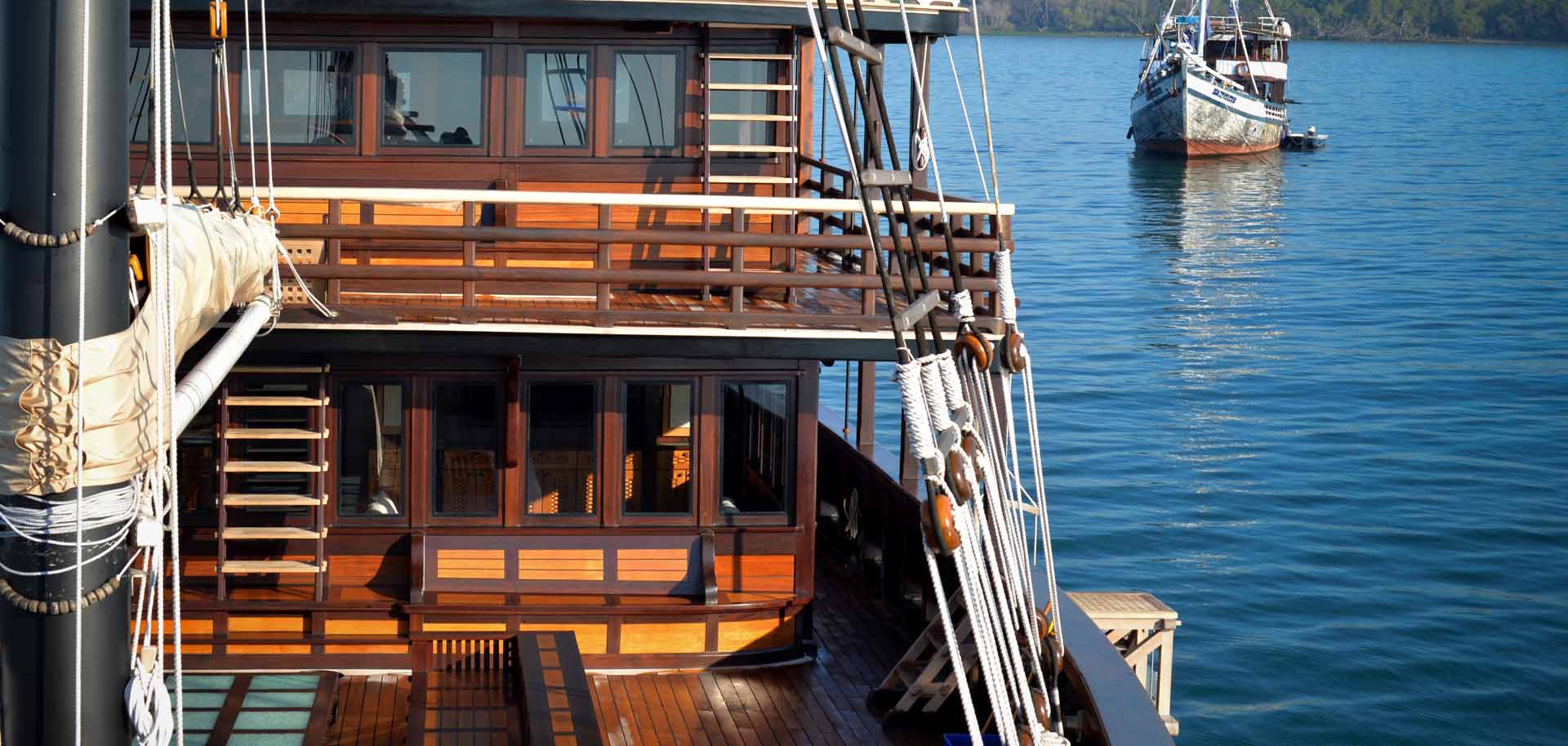
The outlying islands of Indonesia function on a charming concept called jam karet (rubber time) and the wonderful thing about a sailing charter in a land with more than 17,000 islands is that you’re free to change tack at will to explore any enticing shore.
On little Moyo Island we hired rickety motorbikes and rode into the jungle to swim at a waterfall that cascaded through a series of pearly blue pools. On Satonda Island we walked over the rim of the volcano to explore the mysterious crater lake. Exploration by divers has shown that there is no access to the sea and legend has it that this saltwater lake was created by a giant tsunami when nearby Mount Tambora exploded (in 1815), in the biggest eruption in recorded history. Researchers claim that the isolated lake is a living textbook example of the organisms and environment of lakes back in Earth’s Precambrian period (around 600 million years ago).
Monkeys, deer and wild pigs forage on the jungle slopes of the volcano but the lake is frequently cited in blogs as being mysteriously devoid of fish. When we paddled out with kayaks and stand-up paddle boards, however, even a casual glance was enough to show that it is actually well stocked with fish. I asked a local man if somebody had released fish here but he claimed that there’d been fish here since he was a kid and came with his family to tie rocks to the ‘magical’ trees along the shore so that they could make wishes. Tradition holds that if your wish comes true you must return to ‘release the rock’.
A little resort has been built on the landing beach at Satonda but the island has retained much of its mystery. Robba suggested we anchor here for the evening to enjoy an unforgettable wildlife performance and, sure enough, as the sun began to set the sky filled with the shadowy, flapping forms of thousands of giant fruit bats, heading for the fruit trees of nearby Sumbawa.
“For anyone with an interest in wildlife and a love of pure sailing adventure this area’s hard to beat,” Sebastien Pierre, dive-master and cruise director, shouted in my ear as we skipped across viciously swirling currents in the biggest of Dunia Baru’s three RIBs the next morning. Komodo is notorious for the riptide currents that frequently convert the narrow channels between islands into what appear to be rushing rivers.
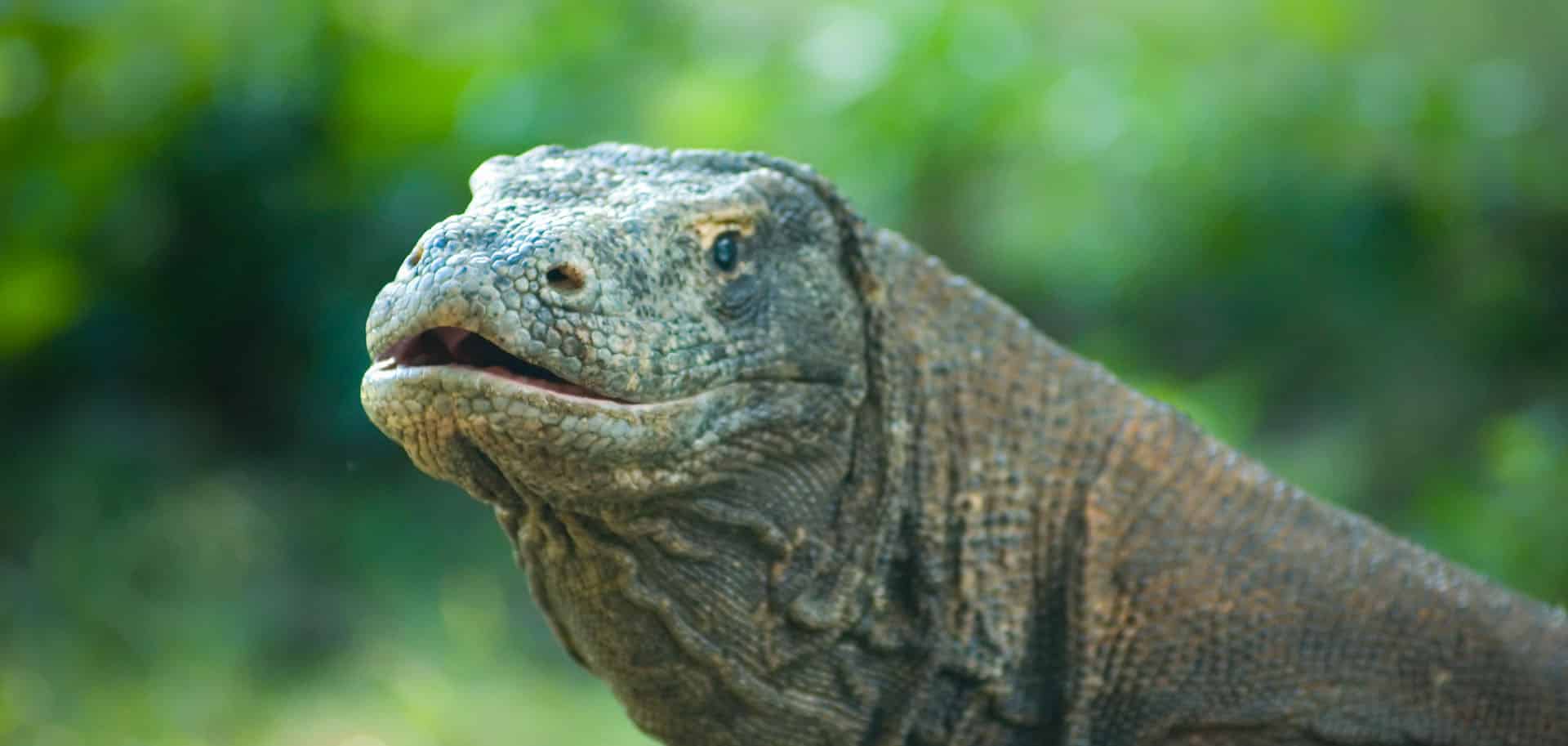
“I’ve sailed around Komodo more times than I can count and it’s different every time,” Pierre continued. “For a diver, this part of the Coral Triangle is one of the most exciting places on the planet.”
As if on cue, just as the RIB came to a stop and we started to clean our masks, a shout from one of the other guests alerted us to what seemed to be the back of a sea monster looming just a few metres off our port side. It broke the surface sedately, gleaming like a patch of black ice. This was what we had come to see and within a moment we had our snorkeling gear on and were over the side watching a manta ray that measured almost 3-metres across its wingtips. It was lazily reaping the benefits of the nutrient rich currents with its great mouth and the otherworldly looking horns that give it the nickname ‘Devil Ray’. Makassar Reef is so famous for these sightings that it’s often called Manta Point and within a short dive we saw a dozen big rays, along with two reef sharks slinking like lithe wolves among the coral.
For those who come to Komodo in search of predators, however, there is of course one unforgettable sighting.
“We don’t need tales of Jurassic Park and velociraptors to see a reptile dominated world,” Sir David Attenborough said half a century after (in 1956) he first captured the reptiles on film. “It’s all still here.”
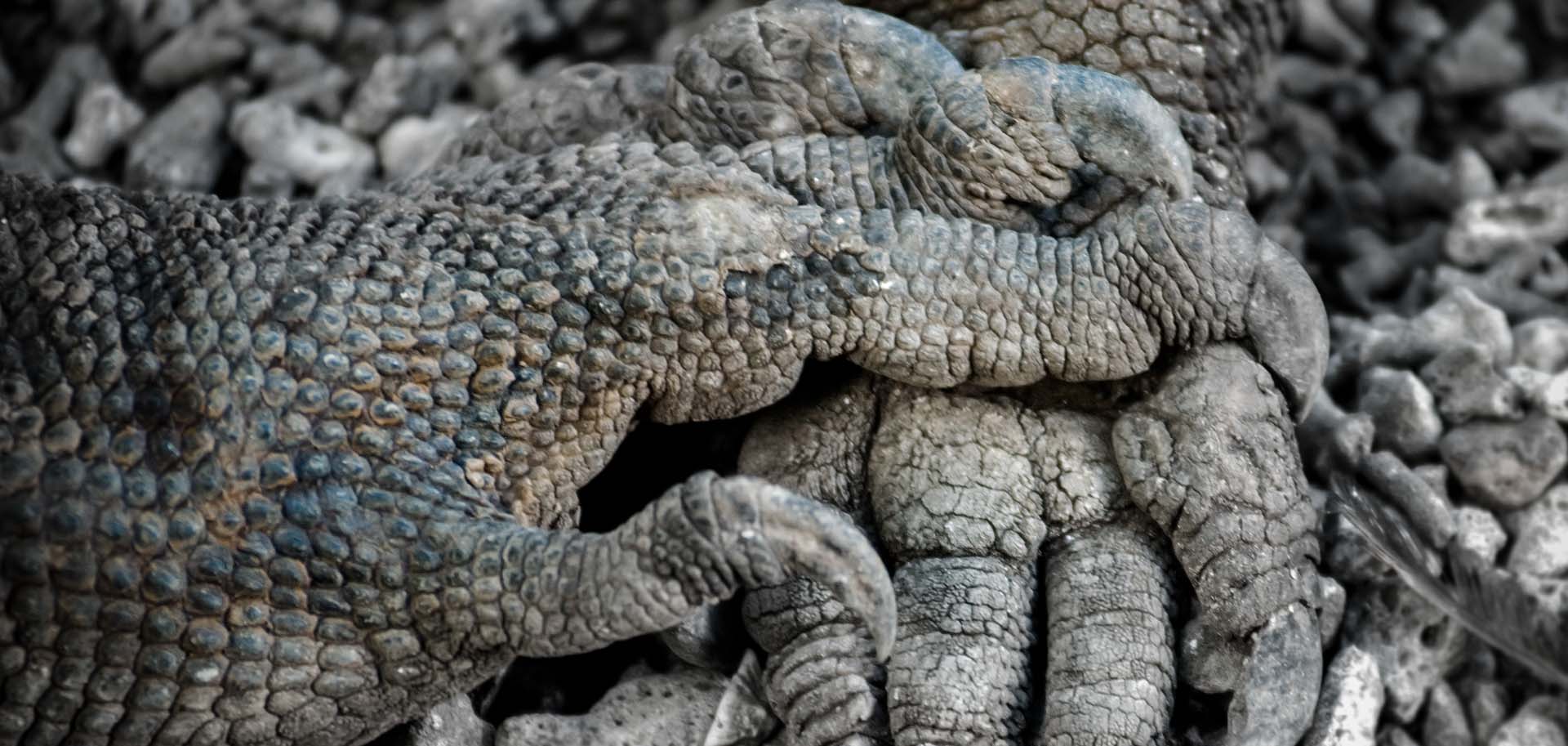
Shortly after dawn the next morning we arrived at the ranger station on Rinca Island, wilder neighbour of famous Komodo and home to the most spectacularly aggressive dragons. The people of Rinca are said to be descendants of rebels who were exiled here by a Sumbawan king who, naturally, assumed that the dragons would eat them. There have indeed been human victims and to this day the villagers live in fear of what they call the mbau.
Visitors are often surprised by the ‘fat, lazy’ lizards that are lured by the smells of the rangers’ kitchen but locals are well aware though that an attack can be terrifyingly swift and potentially deadly. This is the world’s biggest venomous reptile and the saliva that drips freely from the serrated jaws of a hungry dragon contains a powerful anti-coagulant that ensures that its prey will bleed to death.
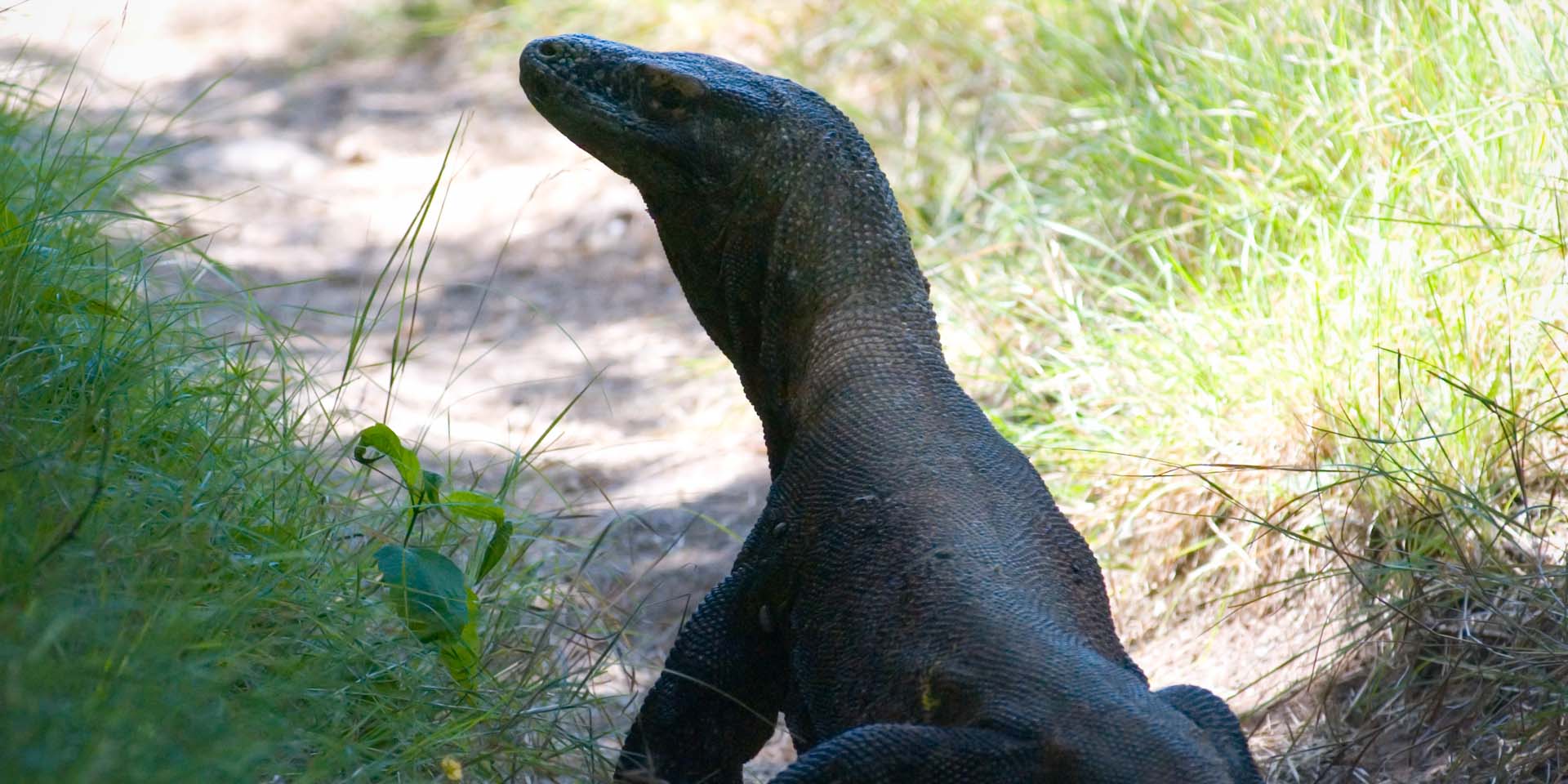
“The dragons probably aren’t actively hunting humans.” I remembered the reassuring words of Australian ecologist Dr Tim Jessop when I was researching a spate of attacks on Rinca Island a few years ago. Jessop spent 11 years researching on these islands, first for San Diego Zoo and then as a scientific advisor for Komodo Survival Program: “If a person gets in the way of a hungry dragon though... well, what’s not to like from the dragon’s culinary point of view.”
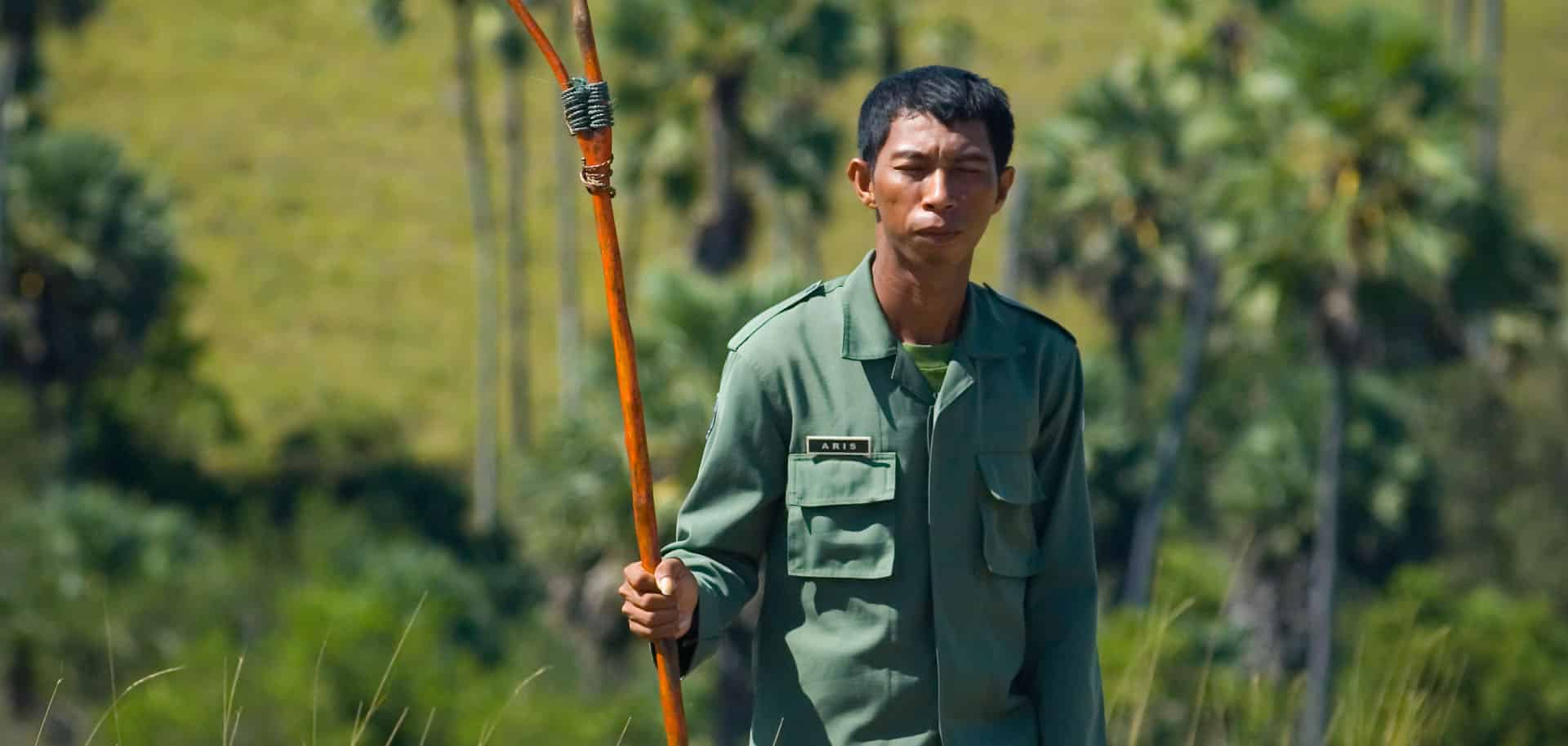
We saw many dragons on Rinca and such thoughts went through my mind yet again as I walked a deserted beach on Padar Island, in the far south of Komodo Archipelago. Until last year Padar was still often used as a peacefully deserted picnic spot by dive boats and cruisers because it was believed to be uninhabited by dragons.
I’d explored the beaches of Padar two years ago, however, and within a few minutes of arrived had noticed a ribbon of churned sand, running like a single bulldozer-track across the edge of the beach. Jagged claw marks were etched at intervals alongside the swaying zigzag of what was clearly a powerful tail. I followed the tracks to the edge of some dense bush. I was sure that there was a dragon inside but, perhaps luckily in hindsight, my courage failed before I nerved myself to explore farther.
“I finally found out the truth about the dragons of Padar,” Pierre said on our last evening as we dined on a secluded island where the crew had erected a pretty gazebo and Tom Brett had barbecued the best Kobe beef I’d ever eaten. “Until recently there were no dragons here but it seems that rangers started using Padar to relocate the most aggressive of the dragons that were involved in attacks on humans in Rinca.”
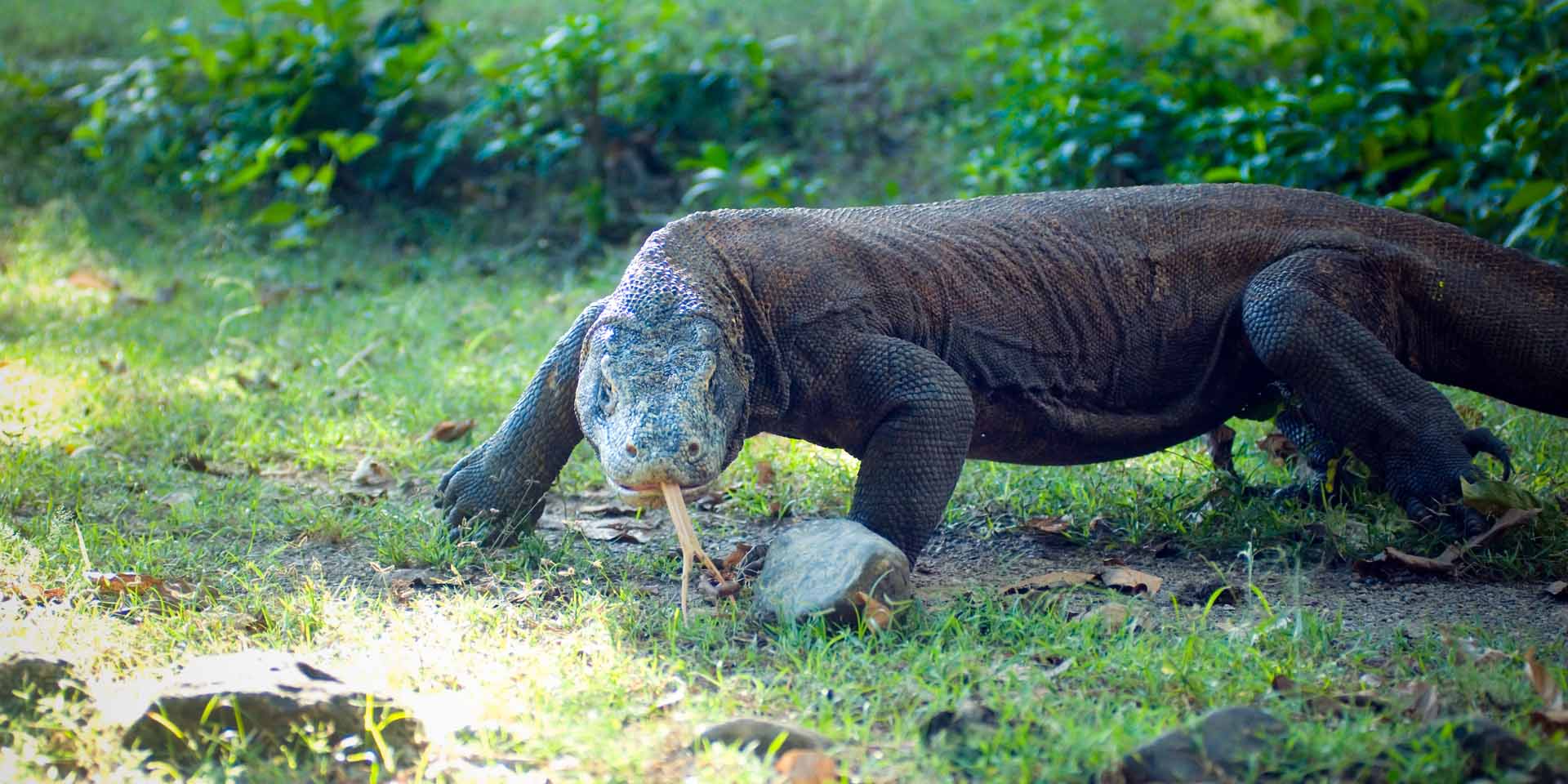
‘Here be Dragons’ reads the cliched warning scrawled across the globes of ancient mariners. But beware: on the southern edge of the Komodo Archipelago – on the pretty little island of Padar – there’s a sort of penal colony for the worst offenders of the dragon world. This is the place where some of the real bad-asses among Asia’s most successful super-predators are raising a colony of their own.
“Needless to say, we don’t recommend picnicking on Padar anymore,” Pierre smiled as he slid a knife through his steak. “There’s enough adventure in Komodo already without that.”
For more information about the Komodo dragons or to discuss planning your dream charter in Komodo National Park, please contact us at: info@indoyachts.com or +62 811 88 22 82 by phone or Whatsapp. We look forward to hearing from you.
Say 'Ahoy!' to let us know how we can help